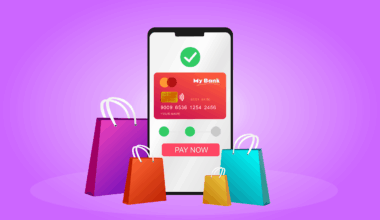Maximizing ROI with In-Person Event Marketing Strategies
In-person events remain a crucial component of marketing strategies, providing a unique opportunity for businesses to connect with their target audience. Unlike digital interactions, these events foster face-to-face relationships and enable real-time engagement. Companies focused on maximizing return on investment (ROI) from their event strategies can utilize several tactics. One effective approach is conducting thorough pre-event research to define objectives clearly. Establishing measurable goals facilitates better tracking of success in terms of attendance, engagement, and conversion rates. Additionally, integrating technology can enhance attendee experiences and streamline operations. Tools like event management software aid in organizing logistics and tracking attendance. Moreover, post-event analysis becomes more efficient with data gathered through these technological platforms. Create compelling content that resonates with the audience and encourages participation. Utilize a variety of formats, such as workshops, panels, or networking sessions, to maintain engagement. The key to success lies in building anticipation and excitement prior to the event through effective marketing channels, such as social media, email campaigns, and personalized invitations. Engage potential attendees early on to foster a sense of belonging even before they arrive.
Moreover, crucial aspects of in-person event marketing include effective content delivery and attendee experience enhancement. Establishing a well-structured agenda is vital, as it keeps attendees informed about the schedule and helps them allocate their time efficiently. A good balance between keynote speeches, breakout sessions, and networking opportunities is essential for maintaining high energy levels amongst participants. Incorporate engaging activities into the event, such as contests and interactive sessions, to keep the audience involved. All these will increase the likelihood of positive word-of-mouth endorsements, which are invaluable for future marketing efforts. Following up with attendees post-event can solidify connections and provide an opportunity for feedback and testimonials. This feedback can also guide improvements for future events, ensuring continuous growth and effective adjustment of strategies. Incorporating visual elements such as videos and infographics during presentations can further amplify message retention amongst attendees. Building a branded environment at the venue enhances visual appeal and promotes brand recognition, making the event memorable. Such experiences will encourage attendees to engage with the brand outside the event context, ultimately driving customer loyalty.
A significant component of leveraging in-person events is the effective use of networking opportunities. Networking can be enhanced by incorporating structured meet-and-greets, round-table discussions, or industry-specific cocktail hours. Encouraging attendees to exchange contact information facilitates follow-ups and relationship building long after the event concludes. By positioning networking opportunities strategically throughout the event, attendees are more likely to interact and form valuable connections. A sense of community can be cultivated through networking, transforming potential leads into loyal customers. To optimize this process, provide attendees with a digital platform or app for sharing information and networking digitally during the event. Not only does this create a dynamic experience, but it can also drive post-event engagement. Consider offering compelling incentives for attendees to engage with others, such as prizes for individuals who make the most connections during the event. Reinforcing the idea of collaboration encourages participants to contribute their expertise, helping to build a robust network of industry professionals. All of these elements combined can create an atmosphere where networking thrives and attends are more likely to derive value from their experience.
Following Up After the Event
Post-event follow-up strategies can significantly impact the long-term success of any marketing initiative. Engaging with attendees after the event helps reinforce relationships and maintain the connection established during the gathering. Sending personalized thank you emails, surveys, or attendee highlights can keep the conversation going. Encourage feedback through digital surveys, as this valuable insight aids in assessing event success and identifying areas for improvement. Target follow-ups based on attendees’ interests displayed during the event; sending tailored content can enhance engagement. Moreover, sharing relevant resources, such as presentations, videos, or blogs, can provide added value to attendees, paving the way for deeper connections. Consider segmenting your audience and customizing follow-ups for different groups based on their attendance and engagement levels. Attendees who actively engaged can receive exclusive access to resources, while others may benefit from additional information about products or services. Utilize social media platforms to encourage ongoing conversations, facilitating continuous engagement beyond the in-person event. Keeping the momentum alive assists in nurturing leads and converting them into loyal customers, amplifying overall ROI.
Utilizing data analytics significantly amplifies the effectiveness of in-person event marketing. Leveraging tools for tracking engagement levels during the event can provide insights into which activities resonated most with attendees. By identifying behaviors and preferences, businesses can adjust their strategies for future events to align more closely with audience expectations. The data collected may include registration metrics, session attendance, lead interactions, and post-event surveys. Analyzing these metrics not only provides insight into attendee behavior but also influences future content development. Tracking how attendees interact with branded materials can help optimize promotional activity, enhancing audience reception. Employing analytic tools continuously throughout the event lifecycle deepens understanding of customer journeys and aids in nurturing relationships effectively. Marketing investments made can be further justified through comprehensive ROI calculations influenced by data-driven insights. Businesses must prioritize leveraging this data to inform all aspects of their event marketing strategies, from event planning to continues relationship management. By marrying data with creative strategies, companies increase their potential for higher engagement levels and ensure that every event produced generates maximum value.
Furthermore, establishing a strong brand presence during in-person events plays a crucial role in maximizing ROI. The appearance of the venue, booth design, and promotional materials must reflect the brand identity consistently. A visually appealing space makes for memorable experiences, encouraging attendees to spend more time interacting with the brand. Consider hiring professionals to design and implement creative and engaging presentations or displays that resonate with the audience. Custom merchandise, which attendees can take home, enhances brand recall long after the event ends. Incorporating branded literature or multimedia can effectively convey core messages while captivating visual elements draw greater attention. Strong branding encourages attendees to share experiences on social media platforms, promoting organic reach and awareness of your brand. Leveraging user-generated content can also play a role in furthering engagement while boosting brand credibility. Encourage attendees to share photos and experiences online, using designated event hashtags. Review these posts regularly, engaging with participants to solidify relationships and maintain visibility. By building an immersive and interactive brand experience, businesses can enhance attendee satisfaction and achieve stronger overall results.
In conclusion, maximizing ROI with in-person event marketing necessitates a multi-faceted approach. It begins with thorough planning and clearly defined objectives while considering attendee engagement and experience. Integrating modern technology with traditional strategies enhances efficiency and effectiveness, allowing for precise measurement of success. The essence of in-person events lies in forging genuine connections that transcend digital barriers, leading to long-lasting customer relationships. Continued engagement strategies post-event are vital in solidifying those connections and ensuring prospective customers are nurtured adequately. Data analytics equips businesses with essential insights for ongoing improvements and strategy adjustments. Strong branding and meaningful engagement during the event foster positive experiences that attendees are likely to remember and share. By being adaptability, companies can refine their approach and achieve even better outcomes at subsequent events. Investing in the overall attendee experience ensures that a lasting impact resonates throughout every aspect of the company’s outreach. Those who implement these strategies correctly find themselves not only maximizing ROI but also establishing a loyal customer base eager to return again.
Transforming Knowledge into Action
Maximizing ROI through in-person events requires transforming insights gained into actionable strategies. Tracking trends and understanding what works best for different audience segments allow organizations to refine their approach continuously. At the same time, deepening consumer insights helps hone messaging around brand values and commitments. Given the rapidly changing marketing landscape, adaptability remains key. Organizations that are willing to innovate and experiment with new formats will gain an edge over competitors. When planning future events, regularly review previous successes and failures to constructively shape your strategy. Collaborating with various stakeholders, such as sponsors, speakers, and partners, can also provide unique perspectives that enhance event execution. Engaging these relationships extends before and after the event, fostering additional opportunities for interactivity. Ultimately, it becomes essential not only to maximize ROI concerning numerical outcomes but equally regarding the qualitative value generated throughout the event lifecycle. This focus creates a more holistic understanding of success, ensuring ongoing improvements while enhancing broader branding efforts. Planting the seeds of future engagements ensures that events yield fruitful results well beyond the closing remarks.


